#iot in biotechnology
Text
Ensuring Security with Microsoft Defender for IoT

In today's interconnected world the Internet of Things (IoT) enriches our lives with smart devices and industrial context Yet alongside its benefits, IoT introduces significant security challenges. From vulnerable default credentials to potential data breaches, the stakes are high. At Mobiloitte, we understand these risks and are committed to fortifying your IoT infrastructure with Microsoft Defender for IoT.
Understanding the Threat Landscape
IoT devices, often characterized by limited processing power and frequent internet connectivity, are prime targets for cyberattacks. Threats such as weak authentication, unpatched vulnerabilities, and unprotected data transmissions can compromise sensitive information and disrupt operations. Addressing these risks requires proactive security measures tailored to the unique demands of IoT environments.
Introducing Microsoft Defender for IoT
Microsoft Defender for IoT stands as a formidable safeguard for your IoT infrastructure. It leverages advanced capabilities to monitor detect and respond to threats in real-time ensuring continuous protection across all connected devices. By analyzing network traffic and employing machine learning algorithms, Defender for IoT identifies anomalous behaviors indicative of potential security breaches, enabling swift mitigation actions.
Key Features and Benefits
Comprehensive Threat Detection: Utilizing Microsoft's extensive threat intelligence network, Defender for IoT stays ahead of emerging threats, safeguarding your devices against the latest vulnerabilities.
Continuous Monitoring and Reporting: Gain insights into your IoT security posture with real-time monitoring and detailed reports on device health and potential risks.
Automated Response: Respond swiftly to detected threats with automated actions, minimizing the impact of security incidents and maintaining operational continuity.
Implementing Best Practices
Beyond deploying Defender for IoT, adopting best practices enhances your IoT security framework:
Strong Authentication: Replace default credentials with strong, unique passwords to prevent unauthorized access.
Regular Updates: Keep IoT devices and security agents updated with the latest patches and firmware releases to mitigate known vulnerabilities.
Network Segmentation and Encryption: Isolate IoT devices in dedicated network segments and encrypt data transmissions to reduce attack surfaces and protect sensitive information.
Empowering Your IoT Security Strategy
At Mobiloitte, we empower organizations to fortify their IoT ecosystems with Microsoft Defender for IoT. Our expertise ensures seamless integration and optimal configuration of Defender for IoT, tailored to your specific operational needs and security objectives. By partnering with us, you gain not just a security solution but a strategic ally in safeguarding your IoT investments against present and future threats.
Conclusion
Securing IoT devices is not just a necessity but a strategic imperative in today's digital landscape. Microsoft Defender for IoT, coupled with industry-leading practices advocated by Mobiloitte, offers a comprehensive defense mechanism against evolving cyber threats. Embrace proactive IoT security today to safeguard your operations,
#iot solutions for manufacturing#telecom iot platform#agriculture iot solutions#iot in gaming#iot in biotechnology
0 notes
Text
IoT development solutions for hospitals in South Africa
Revolutionize healthcare in South Africa with Mobiloitte's IoT Development Solutions tailored for hospitals. Our cutting-edge technology enhances patient care, streamlines operations, and improves resource management. Monitor equipment, ensure patient safety, and reduce costs with our user-friendly solutions. Embrace innovation and deliver world-class healthcare. Partner with Mobiloitte, your trusted South African IoT development experts.

#IoT Development Solutions#Integrating IoT#IoT Services#IoT & Emerging Technologies#IoT Solutions for Smart Applications#IoT Division#Product Development Channel#IoT Automation Solutions#IoT systems#IoT Solutions for Education#iot in gaming#iot in biotechnology#iot solutions for hotels#iot in hospitality industry#smart home iot solutions#iot solutions for transportation#blockchain iot app development company#blockchain iot software development company#IoT application development services
0 notes
Text
IoT Development Solutions in the USA
Discover cutting-edge IoT development solutions in the USA with Mobiloitte US. Our expertise spans industries like healthcare, smart cities, and logistics. We utilise a robust tech stack, including IoT platforms, AI, and edge computing, to create innovative, scalable, and secure IoT solutions tailored to your needs. Elevate your business with Mobiloitte US.
#software development#iot in biotechnology#iot automation solutions#software development company#iot solutions for education#iot solutions for hotels#iot in hospitality industry#smart home iot solutions#iot solutions for transportation#blockchain iot app development company#blockchain iot software development company
0 notes
Text
Revolutionary Tech Innovations Shaping Our Future
Introduction
Technology is advancing rapidly, revolutionizing our lifestyles, workplaces, and interactions with the world. From artificial intelligence (AI) and quantum computing to renewable energy and biotechnology, revolutionary tech innovations are shaping our future in unprecedented ways. In this blog post, we will explore some of the most groundbreaking technological advancements and their potential to reshape our lives. Read to continue
#Innovation Insights#TagsAI advancements#AI in education#AI in healthcare#AR applications#augmented reality#biotech in healthcare#biotechnology breakthroughs#future of technology#IoT applications#IoT in smart cities#quantum computing#quantum computing benefits#renewable energy future#renewable energy technology#revolutionary tech innovations#smart cities#tech advancements#virtual reality#Technology#Science#business tech#Adobe cloud#Trends#Nvidia Drive#Analysis#Tech news#Science updates#Digital advancements#Tech trends
1 note
·
View note
Text
Explore future technologies like sand batteries and Eskin, and discover how these advancements have the potential to revolutionize the world for the better.

#ortmoragency#deliveringdigitalhappiness#futuretech#TechTrends#innovation#AI#machinelearning#QuantumComputing#blockchain#virtualrealityexperience#augmentedreality#IoT#DigitalTransformation#robotics#biotechnology#nanotechnology#spacetech#sustainabilitytech#3dprinting#NextGenTech#TechRevolution#FutureOfTech#mixedreality#virtualreality#autonomousvehicles
0 notes
Text
10 Groundbreaking Innovations Shaping Our Future: Brace Yourself for the Journey Ahead

Prepare to embark on an exhilarating exploration of tomorrow! We're delving into ten revolutionary technologies that are swiftly reshaping our world. From awe-inspiring artificial intelligence to sustainable solutions that mend the planet, these breakthroughs hold the power to redefine not only our daily routines but also the monumental challenges confronting humanity. So, fuel your curiosity and brace yourself for an astonishing voyage!
Artificial Intelligence (AI): Envision machines capable of learning, reasoning, and even innovating! AI is forging new frontiers across various domains, from enhancing healthcare diagnostics to powering autonomous vehicles. As AI advances, it heralds a paradigm shift in industries, streamlining operations, and even fostering collaboration in creativity!
Internet of Things (IoT): Welcome to a realm where your refrigerator restocks groceries and your sneakers monitor fitness milestones! The IoT seamlessly connects mundane objects to the internet, enabling data collection and exchange. This interconnected ecosystem promises heightened efficiency, automation, and convenience in our daily lives.
Blockchain Technology: Picture a digital ledger impervious to manipulation. That's blockchain! Beyond fueling cryptocurrencies, this groundbreaking technology holds vast potential, from fortifying voting systems to fostering transparent supply chains.
Quantum Computing: Brace for a computational revolution like no other! Quantum computers harness the peculiarities of quantum mechanics to tackle problems beyond the scope of today's most potent supercomputers. This breakthrough could catalyze advancements in medicine, materials science, and AI.
Biotechnology and Gene Editing: From unraveling the human genome to crafting life-saving medications, biotechnology is making significant strides. Now, gene-editing tools like CRISPR are taking the spotlight, offering hope for treating and eradicating genetic diseases.
Augmented Reality (AR) and Virtual Reality (VR): Prepare to blur the boundaries between reality and the virtual realm! AR overlays digital elements onto the physical world, while VR immerses users in entirely computer-generated environments. These technologies are poised to revolutionize gaming, education, and healthcare.
Renewable Energy Technologies: Solar, wind, and other renewable energy sources are transitioning from the sidelines to the forefront. As technology advances and costs plummet, renewables are poised to emerge as the primary source of clean energy, combating climate change and fostering sustainability.
Autonomous Vehicles: Self-driving cars are no longer the stuff of science fiction! Breakthroughs in AI and sensor technology are paving the way for a future where vehicles navigate roads autonomously, revolutionizing transportation safety and accessibility.
Robotics and Automation: Robots are transcending factory confines, venturing into realms such as surgery, space exploration, and household assistance. As robotics evolves, anticipate the emergence of even more intelligent and adaptable robots playing pivotal roles in our lives.
Advanced Materials Science: From self-healing concrete to ultralightweight yet exceptionally robust composites, advancements in materials science are pushing the boundaries of possibility. These novel materials have the potential to revolutionize industries ranging from construction to aerospace engineering.
This is merely a glimpse of the remarkable technological advancements shaping our future. As these innovations continue to evolve and intersect, we stand on the brink of an era teeming with thrilling opportunities. Fasten your seatbelt and brace yourself for an extraordinary journey.
#Innovation#FutureTech#AI#IoT#Blockchain#QuantumComputing#Biotechnology#AR#VR#RenewableEnergy#AutonomousVehicles#Robotics#MaterialsScience
0 notes
Text
How to Understand and Adapt Technology Trends and Forecasts for the Future
Here are some common types of articles:
Briefly introduce the topic or technology trend you’re going to discuss.
Provide some context for why it’s significant or popular.
Body:
1. Overview of the Trend:
Explain what the technology trend is and what it involves.
Mention any key players or companies involved.
2. Benefits and Applications:
Describe the potential benefits and…

View On WordPress
#5G#Artificial Intelligence#Biotechnology#Blockchain#Cybersecurity#Digital Transformation#Emerging Technologies#Future Technology#Google Ranking#Green Technology#Innovation#Internet of Things (IoT)#Metaverse#Quantum Computing#Robotics#SEO#Tech Industry#Tech Insights#Tech Trends#Technology Trends
0 notes
Text
Deep Tech: Advancing Innovation

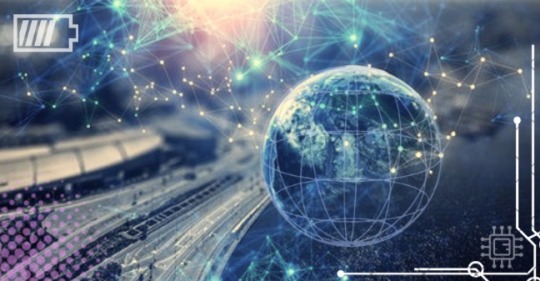
#deep tech#tech#deep technology#deep techno#deep techno mix#tech house#techno#Major Deep Tech Fields#Deep Tech: Advancing Innovation#Why do we need deep tech#Basic Use of Deep Tech#Importance of deep tech#Challenges of deep tech#Futures of deep tech#Artificial Intelligence (AI)#Robotics and automation#Biotechnology and Genetic Engineering#Nanotechnology#Internet of Things (IoT)
0 notes
Text
Accelerating the Future: How IoT Propels Proptech to a $4.7 Billion Horizon by 2033

The real estate industry has been evolving rapidly in recent years, thanks to the integration of cutting-edge technology. One of the most transformative forces at play is the Internet of Things (IoT). IoT’s convergence with property technology, or Proptech, is not only reshaping the industry but also projecting it towards unprecedented growth. By 2033, the IoT in the Proptech market is expected to surge to a staggering valuation of $4.7 billion. In this blog, we will delve deeper into how IoT is not just changing but accelerating the future of Proptech and what this means for property owners, managers, and tenants.
Energy Management: A Critical Aspect of Proptech
In an era marked by heightened global awareness of climate change and sustainability, energy management has emerged as a critical component of Proptech. Efficient energy management not only reduces costs but also aligns with the urgent need to minimize carbon footprints. This is where IoT is playing a pivotal role.
The Role of IoT in Energy Management
IoT sensors and devices are at the forefront of revolutionizing energy management within Proptech. They enable real-time monitoring of energy consumption in buildings and facilities, offering invaluable data and insights. This data empowers property owners, managers, and tenants to optimize energy consumption in ways previously unimaginable.
Key Advantages of Energy Management Through IoT
Reduction of Energy Wastage: IoT devices have the capability to detect and address energy wastage in real time. Lights, HVAC systems, and other energy-consuming components can be automatically controlled to minimize unnecessary usage. In fact, studies have shown that IoT-driven energy management can lead to reductions in energy consumption by up to 20%.
Integration of Renewable Energy Sources: The integration of renewable energy sources, such as solar panels and wind turbines, into the energy grid of a property, has become more seamless with IoT. This enables properties to harness clean energy and reduce their dependence on non-renewable sources, thereby making a significant contribution to sustainability goals.
Intelligent Response to Peak Demand: IoT systems can intelligently respond to peak energy demand by adjusting energy usage patterns. This not only helps to avoid energy spikes but also reduces costs associated with peak-hour pricing. A report by McKinsey & Company estimates that IoT-enabled peak demand management can result in a 15-30% reduction in peak load.
Automation Aligned with Occupancy Patterns: IoT-enabled automation can adapt energy systems to occupancy patterns. Lights, heating, and cooling can be optimized based on whether a room or area is occupied or vacant, significantly reducing energy consumption during idle periods. Studies have indicated that this automation can lead to energy savings of 20-30%.
The Environmental and Financial Impact
The advantages of energy management in the IoT-driven Proptech market extend beyond cost savings. They align with global sustainability objectives and contribute to environmentally responsible practices. By minimizing energy wastage and harnessing renewable energy sources, properties can substantially reduce their carbon footprint. It is estimated that IoT-enabled energy management can result in a 30-60% reduction in greenhouse gas emissions.
Furthermore, the financial benefits of energy optimization are substantial. Property owners can enjoy reduced operational costs, improved asset value, and increased market competitiveness. Tenants also benefit from lower utility bills and a more comfortable, eco-friendly living or working environment. A study by the U.S. Department of Energy found that IoT-driven energy efficiency measures can result in an average annual energy cost savings of 8-22% for commercial buildings.
Conclusion:
The future of Proptech is undeniably being accelerated by IoT, with a projected market valuation of $4.7 billion by 2033. Energy management, driven by IoT technologies, lies at the heart of this transformation. It promises not only cost savings but also alignment with global sustainability goals. By reducing energy wastage, integrating renewable sources, intelligently responding to peak demand, and automating energy systems, the Proptech industry is poised to create a more environmentally responsible and financially rewarding future for all stakeholders.
As the world becomes increasingly conscious of the need for sustainable practices, IoT in Proptech stands as a beacon of progress, guiding the real estate industry toward a brighter and greener horizon. The data speaks for itself, demonstrating the tangible and significant impact that IoT is having on the future of Proptech. As we move forward, it’s clear that embracing IoT is not just a choice; it’s a necessity for the continued growth and sustainability of the real estate industry in the modern era.
Read More: https://bit.ly/41AAGFh
Mobiloitte Pty Ltd
#iot solutions for manufacturing#telecom iot platform#agriculture iot solutions#iot in gaming#iot in biotechnology
0 notes
Text
Mobiloitte’ IoT Application Development Services in South Africa
Empower homes across South Africa with the future of smart living through Mobiloitte's IoT application development services. Our experts utilize IoT technologies like MQTT, IoT protocols, and cloud integration to create intuitive, energy-efficient, and secure smart home solutions. Experience heightened comfort, convenience, and energy savings. Choose Mobiloitte for cutting-edge IoT applications that enhance lifestyles across the nation.

#IoT Development Solutions#Integrating IoT#IoT Services#IoT & Emerging Technologies#IoT Solutions for Smart Applications#IoT Division#Product Development Channel#IoT Automation Solutions#IoT systems#IoT Solutions for Education#iot in gaming#iot in biotechnology#iot solutions for hotels#iot in hospitality industry#smart home iot solutions#iot solutions for transportation#blockchain iot app development company#blockchain iot software development company#IoT application development services
0 notes
Text
3 senior care technology trends to track in 2023

- By InnoNurse Staff -
Staff shortages and rising smart device use by older individuals are pushing senior care technology developments.
Read more via HealthTech Magazine
///
Other recent news and insights
Vector Health Labs has acquired AI-powered mental health tech startup Get A-Head (Betakit)
HealthBird aims to provide a revolutionary answer to health insurance issues (HealthBird/PR Newswire)
Utilizing artificial intelligence technology for IVF embryo selection (Weill Cornell Medicine)
Healthcare data is complicated, and Metriport is aiming to fix it (TechCrunch)
XtalPi and EDDC are working together on an AI-powered drug discovery initiative for Non-Small Cell Lung Cancer (XtalPi Inc./PR Newswire)
Spatial lung cell atlas sheds light on illness and immunological function (Wellcome Trust Sanger Institute)
#medtech#biotech#biotechnology#health tech#digital health#iot#ai#artificial intelligence#vector health labs#get a head#healthbird#insurtech#health insurance#ivf#women health#pregnancy#health data#metriport#senior care#senior citizens#seniors#cancer#oncology#pharma#xtalpi#eddc#medical imaging#imaging#lung
0 notes
Text
How Innovation Is Reshaping the Food Industry
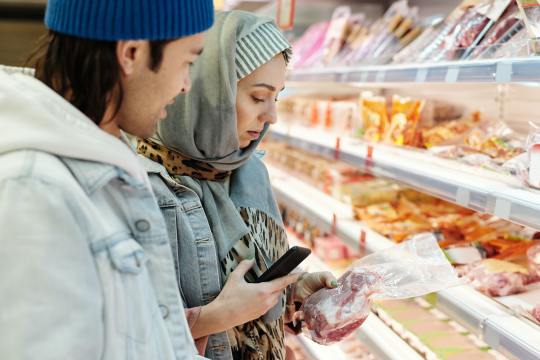
Food innovation refers to introducing novel ideas, products, and technologies that change how society produces, processes, packages, distributes, and consumes food. It goes beyond merely creating new recipes or flavors - food innovation encompasses advances in agriculture, food science, sustainability, and packaging. The goal is to enhance efficiency, safety, nutrition, and the overall consumer experience.
The need for food innovation arises from the ever-changing demands of consumers and the pressing challenges faced by the industry. As the global population continues to grow, so does the demand for food. Additionally, sustainability concerns, climate change, and limited resources prompt exploring alternative food growing and production methods. Innovations in food aim to enhance food security, minimize environmental impact, and offer consumers healthier, more diverse options.
Food innovation occurs through a combination of research, collaboration, and creativity. Scientists, entrepreneurs, farmers, and food industry professionals work together to develop new technologies and processes. Research institutions and startups play a crucial role in conducting experiments, testing new concepts, and bringing innovative products to the market.
In recent years, the food industry has witnessed groundbreaking innovations reshaping how people interact with food. The plant-based movement has gained immense traction, with plant-based alternatives for meat, dairy, and seafood becoming mainstream. Companies have developed plant-based burgers, vegan cheeses, and sustainable seafood alternatives using cutting-edge technologies. Beyond plant-based options, innovations have also focused on alternative protein sources, such as insect-based proteins and lab-grown meats, offering sustainable and protein-rich alternatives.
Swedish startup Mycorena is boosting microbial protein production through its fungi-based mycoprotein called Promyc. This ingredient can be used to create meat and tuna alternatives, beverage additives, and dessert ingredients, offering plant-based and sustainable options for consumers.
Finnish startup Onego Bio has developed a product genetically identical to egg whites using fermentation, and without using actual chickens. It uses precision fermentation of a microflora called Trichoderma reesei to produce ovalbumin, the protein found in chicken egg whites. This technology offers a sustainable and animal-friendly alternative for various food applications, including baked goods, desserts, sauces, and dressings.
Companies like New Culture are incorporating animal-free casein into their cheeses through precision fermentation. This breakthrough allows them to produce animal-free mozzarella cheese, offering a delicious and cruelty-free alternative to traditional dairy products.
In addition, consumers increasingly seek transparency in food choices, leading to the clean label movement. Brands are responding by using simple natural ingredients and avoiding artificial additives and preservatives.
Breakthrough innovations in the food industry are revolutionizing how society grows, produces, and consumes food, focusing on sustainability, nutrition, and convenience. One such innovation is plastic-free and smart packaging. Food companies are exploring biodegradable and even edible packaging solutions in response to environmental concerns. Smart packaging using nanotechnology is also gaining popularity, allowing consumers to assess food safety and quality easily.
The Internet of Things (IoT) in agriculture employs sensors and data analytics for optimizing crop conditions, irrigation, and pest control, reducing resource usage. Food waste reduction solutions, such as surplus food redistribution platforms, are being developed to combat the global food waste crisis. Moreover, biotechnology and data science advances enable personalized nutrition, tailoring dietary recommendations to individuals based on their genetic makeup, lifestyle, and health goals. These innovations promise a more sustainable, healthier, and efficient food future.
Food innovation is driving a remarkable transformation in the food industry, responding to the challenges and opportunities of today. From new plant-based products to sustainable agriculture and cutting-edge technologies, the future of food promises to be more diverse, nutritious, and sustainable. As consumers, entrepreneurs, and stakeholders continue to embrace innovation, the food industry's journey toward a more resilient and conscious future is set to continue.
13 notes
·
View notes
Text
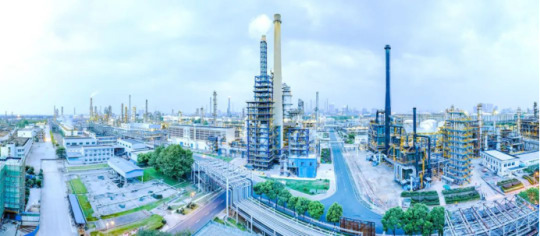

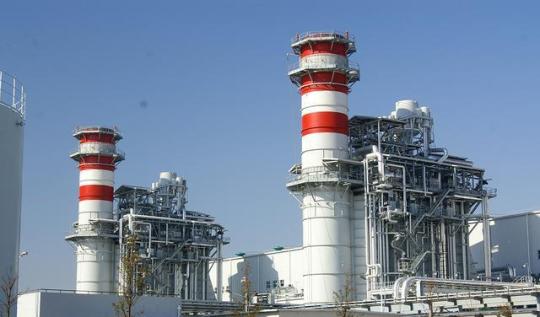
Looking forward to China’s industrial development prospects in the next 10 years
Looking forward to China's industrial development in the next 10 years, analysis and predictions can be made based on existing development trends, policy orientations and the global economic environment:
Industrial upgrading and structural optimization:
China will continue to promote the upgrading of its industrial structure from labor-intensive to technology- and capital-intensive. Mid- to high-end manufacturing will be the key development direction, including aerospace, high-end equipment, new energy vehicles, new materials and other fields.
With the deepening implementation of the "Made in China 2025" strategy and subsequent planning, China will accelerate the in-depth integration of industrialization and informatization, and promote the development of emerging industries such as intelligent manufacturing and the industrial Internet.
Innovation drive and technological progress:
Against the background of intensified global technological competition, China will further increase investment in technological innovation, especially in fields such as 5G, artificial intelligence, Internet of Things (IoT), quantum information, and biotechnology, to enhance the core competitiveness of the industry.
Industry 4.0 related technologies and digital transformation will become mainstream. Enterprises will improve production efficiency and product quality through automation and intelligent transformation, and achieve personalized customization and flexible production.
Green and sustainable development:
Environmental protection policies are becoming stricter, and low-carbon economy and circular economy will have a profound impact on the path of industrial development. China's industry will be committed to energy conservation and emission reduction, clean production, and the development of green manufacturing systems, such as new energy, energy-saving and environmental protection equipment and services.
Globalization and industrial chain reconstruction:
Taking into account the rise of trade protectionism and the adjustment trend of global supply chains, Chinese industry will actively build independent and controllable industrial and supply chains, seek a higher position in the global value chain, and enhance international competitiveness.
While low-end industries are being transferred, China will strengthen international cooperation in some areas, actively participate in the global industrial division of labor, and build international brands and multinational companies.
Talent training and system reform:
Facing the challenge of aging, China will pay more attention to the cultivation and introduction of talents, improve the quality of the labor force, especially the construction of highly skilled talent teams, to support the development needs of high-end industries.
Deepen institutional reform, create a better business environment, encourage innovation and entrepreneurship, promote the development of small, medium and micro enterprises, and stimulate market vitality.
To sum up, in the next ten years, China's industry will focus on high-quality development, focus on technological innovation, industrial chain upgrading, green development and improvement of global competitiveness, and strive to achieve the leap from a manufacturing country to a manufacturing power. At the same time, we will also respond to the challenges brought about by changes in the internal and external environments, continue to deepen reforms, and ensure the stable and healthy development of the industrial economy.
2 notes
·
View notes
Text
The Tech Odyssey:Navigating the Digital Age
In an era where technology is at the forefront of our lives, it's almost impossible to imagine a world without its profound influence. From the gadgets we carry in our pockets to the complex systems that power industries, technology is the driving force behind innovation and progress. In this blog, we'll dive into the ever-evolving world of technology, exploring its impact, trends, and the possibilities it holds for the future.
The Digital Revolution
The digital revolution has transformed the way we live, work, and communicate. It has brought us closer together while simultaneously creating a complex web of opportunities and challenges. Here are some key aspects to consider:
Connectivity: The rise of the internet and mobile technology has connected people and information like never before, reshaping industries from education to healthcare.
Artificial Intelligence: AI is changing the way we approach problems, from self-driving cars to virtual personal assistants like Siri and Alexa.
Data & Privacy: With great connectivity comes great responsibility. The debate on data privacy and security is more critical than ever, as we grapple with balancing convenience and personal information protection.
2. Emerging Technologies
The tech world is in a constant state of innovation. Some of the most exciting emerging technologies include:
Blockchain: Beyond cryptocurrencies like Bitcoin,blockchain technology holds potential for secure and transparent transactions, supply chain management, and more.
Quantum Computing: Quantum computers have the potential to revolutionize computing by solving complex problems faster than classical computers ever could.
Augmented & Virtual Reality ( AR / VR ): AR and VR are changing the way we experience entertainment, education, and even remote work.
3. Tech Trends
Keeping up with the latest tech trends can be both exciting and overwhelming. Some trends worth noting include:
5G Connectivity: The rollout of 5G networks promises faster internet speeds, enabling technologies like IoT (Internet of Things) to thrive.
Edge Computing: With more devices connected to the internet, edge computing brings processing closer to the data source, reducing latency and improving efficiency.
Sustainability: As we face environmental challenges, technology plays a crucial role in finding sustainable solutions, from renewable energy to green tech innovations.
4. Tech In Our Daily Lives
Technology has infiltrated every aspect of our daily lives, from how we communicate with loved ones to how we entertain ourselves. Consider:
Smart Homes: The integration of technology into our homes allows for greater convenience, energy efficiency, and security.
Health Tech: Wearable devices and health apps empower individuals to take control of their health and wellness.
E - commerce: Online shopping has transformed the retail landscape, offering convenience and an ever-expanding array of products.
5. The Future Of Tech
The future of technology is a thrilling frontier filled with possibilities. Some predictions include:
Autonomous Vehicles: Self-driving cars may become a common sight on the roads, changing transportation and urban planning.
Space Exploration: Private companies are driving the commercialization of space travel, making it accessible to more people.
Biotechnology: Advances in biotech could revolutionize medicine, offering personalized treatments and possibly even extending human lifespans.
Technology is not just a tool; it's a dynamic force shaping our world. Embracing its potential while addressing its challenges is our collective responsibility. As we embark on this tech odyssey, let's keep in mind the importance of ethics, security, and sustainability to ensure that technology continues to be a force for good, enhancing our lives and pushing the boundaries of what's possible in the digital age. Stay tuned as we explore the ever-evolving landscape of technology and its profound impact on our future.
#TECHWANDERER
3 notes
·
View notes
Video
youtube
The Power of Innovation: Unveiling the Top Technological Advancements of...
#TechnologicalAdvancements #PowerOfInnovation #CuttingEdgeTechnology
hello Friends! In this exciting video, titled "The Power of Innovation: Unveiling the Top Technological Advancements of Today," we dive into the dynamic world of technology and showcase the most impactful and groundbreaking advancements that are shaping our present and future.
Join us as we explore the forefront of innovation and unveil the top technological advancements of today. From cutting-edge scientific discoveries to game-changing inventions, these advancements are revolutionizing industries, improving lives, and transforming the way we perceive the world.
We'll introduce you to a range of awe-inspiring technologies that are making a profound impact across various fields. Witness the incredible strides in artificial intelligence and machine learning, which are driving advancements in autonomous vehicles, medical diagnostics, and personalized recommendations.
Discover the potential of the Internet of Things (IoT) as it connects devices, cities, and entire ecosystems, revolutionizing the way we interact with our surroundings.
Experience the immersive world of virtual reality and augmented reality, blurring the lines between the digital and physical realms. We'll also explore the marvels of biotechnology, including gene editing, regenerative medicine, and precision medicine, which have the potential to transform healthcare and prolong human life.
Throughout the video, we'll delve into real-world examples, success stories, and the implications of these advancements for society. We'll discuss the opportunities they present, as well as the challenges we must navigate, such as privacy concerns, ethical considerations, and ensuring equitable access.
Our goal is to inspire and inform, highlighting the power of human ingenuity and the potential for technological advancements to shape a better future.
Join us as we unveil the top technological advancements of today and invite you to imagine the possibilities that lie ahead. Remember to like this video, share it with fellow technology enthusiasts, and subscribe to our channel for more captivating content that explores the wonders of innovation.
Together, let's embrace the power of technology and forge a path toward a brighter, more connected future.
#TechnologicalAdvancements #PowerOfInnovation #CuttingEdgeTechnology #ArtificialIntelligence #MachineLearning #InternetOfThings #VirtualReality #AugmentedReality #Biotechnology #InnovationFrontiers #TransformingIndustries #FutureOfTechnology #SocietyImpact #EthicalConsiderations #InspiringInnovation #TechEnthusiasts #ImaginingTheFutureTech Trend Loop
2 notes
·
View notes
Photo
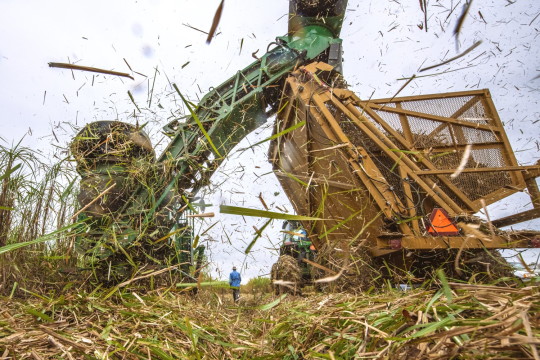
Illustration Photo: Sugarcane is one of the most efficient producers of biomass of all plant species and can be used as a renewable fuel. The new variety Ho 06-9002 has a high fiber content, excellent regrowth ability over 4 to 5 years, is cold-tolerant, has a high stalk population, and produces excellent biomass yields. (credits: USDA Media by Lance Cheung / Public domain)
Repsol Entrepreneurs Fund for Startups in the Energy Transition
At the Repsol Foundation, we have been supporting entrepreneurship and entrepreneurs for more than 10 years through Fondo de Emprendedores, our accelerator for start-ups that provide technological solutions to meet the challenges of the Energy Transition. This is a perfect program for start-ups in the testing phase with real customers, or that will reach this phase in 1–2 years.
This program aims to accelerate startups working in any of the following:
SCOPE 1: LOW-CARBON ENERGY TECHNOLOGIES AND CIRCULAR ECONOMY
1. Recycling and treatment technologies: conversion of biomass, new processes for converting waste into chemical products
2. Biogas production, upgrading, transport and end use technologies
3. Low environmental impact H2 renewable solutions for production, blending, transport and storage
4. Advanced biofuel production and conversion technologies (liquefaction or de novo, gasification) and synthetic fuels for road, maritime and aviation transport
5. Processing of chemicals and other organic materials for circular economy
6. Low-carbon lubricants for industrial and automotive applications
7. CO2 Capture, Use and/or Storage Technologies. CO2 Direct Air Capture: new absorbent materials and efficient process design
8. COX, H2 conversion processes to Hydrocarbons
9. Low carbon technologies for Oil & Gas operations, including energy efficiency, GHG direct emissions (scopes 1 and 2), Methane emissions, CCS or Geothermal.
10. Other technologies related to this scope’s heading
SCOPE 2: BIOTECHNOLOGY AND NANOTECHNOLOGY FOR SUSTAINABLE SOLUTIONS
1. Bio conversion of organic material to chemicals. Biorefinery, biofactory
2. Protein engineering, development of biocatalysts and enzymes
3. Gene editing technologies and applications in energy and materials
4. Plastic biodegradation technologies
5. Biosensors design, production and end use.
6. Anti-corrosive, anti-bacterial, thermal nanocoating for pipelines and infrastructures
7. Organic and inorganic membrane technologies, including new materials
8. Improvement of the properties of fuels, lubricants and chemicals
9. Other technologies related to this scope’s heading
SCOPE 3: PRODUCTS AND SERVICES BASED ON ENERGY MANAGEMENT AND RENEWABLES
1. Intelligent energy management systems
2. New batteries and fuel cells technologies
3. Distributed energy solutions
4. Energy conversion and storage systems
5. Advanced mobility solutions
6. Renewable energy generation, maintenance and control and commercialization.
7. Other technologies related to this scope’s heading
SCOPE 4: DIGITAL TECHNOLOGIES FOR THE ENERGY SECTOR
1. Artificial intelligence applied to process optimization and energy efficiency.
2. Digital twins and intelligent interfaces for process control
3. Digital technologies for predictive and prescriptive maintenance
4. Smart trading for the energy marketplace
5. Computational chemistry tools for energy applications
6. Remote sensing, IoT and robotic solutions for industrial assets and environment
7. Quantum computing applications in energy sector
8. Other technologies related to this scope’s heading
SCOPE 5: NATURAL SOLUTIONS FOR CARBON FOOTPRINT REDUCTION
1. Reforestation and afforestation technologies for resilient CO2 absorption sinks
2. Advanced monitoring, reporting and verification technologies in CO2 absorption
3. Digital technologies applied to carbon markets value chain
4. Technologies for ESG (Environmental, Social and Governance) project certification
5. Other technologies related to this scope’s heading
Startups admitted to the Program will receive during the acceleration period a contribution of FIVE THOUSAND EUROS (€ 5,000) per month as ordinary funds.
Additionally, admitted Startups may request up to a maximum of FORTY THOUSAND EUROS (€ 40,000) per year as extraordinary funds for strategic expenses to achieve the milestones of the Work Plan (as defined in section 4.4), mainly to complete the pilot test.
The disbursement of this additional contribution will be subject to the exclusive decision of Fundación Repsol.
Application Deadline: March 10, 2023
Check more https://adalidda.com/posts/c4qmPwNwToZAAbf2L/repsol-entrepreneurs-fund-for-startups-in-the-energy/call
2 notes
·
View notes